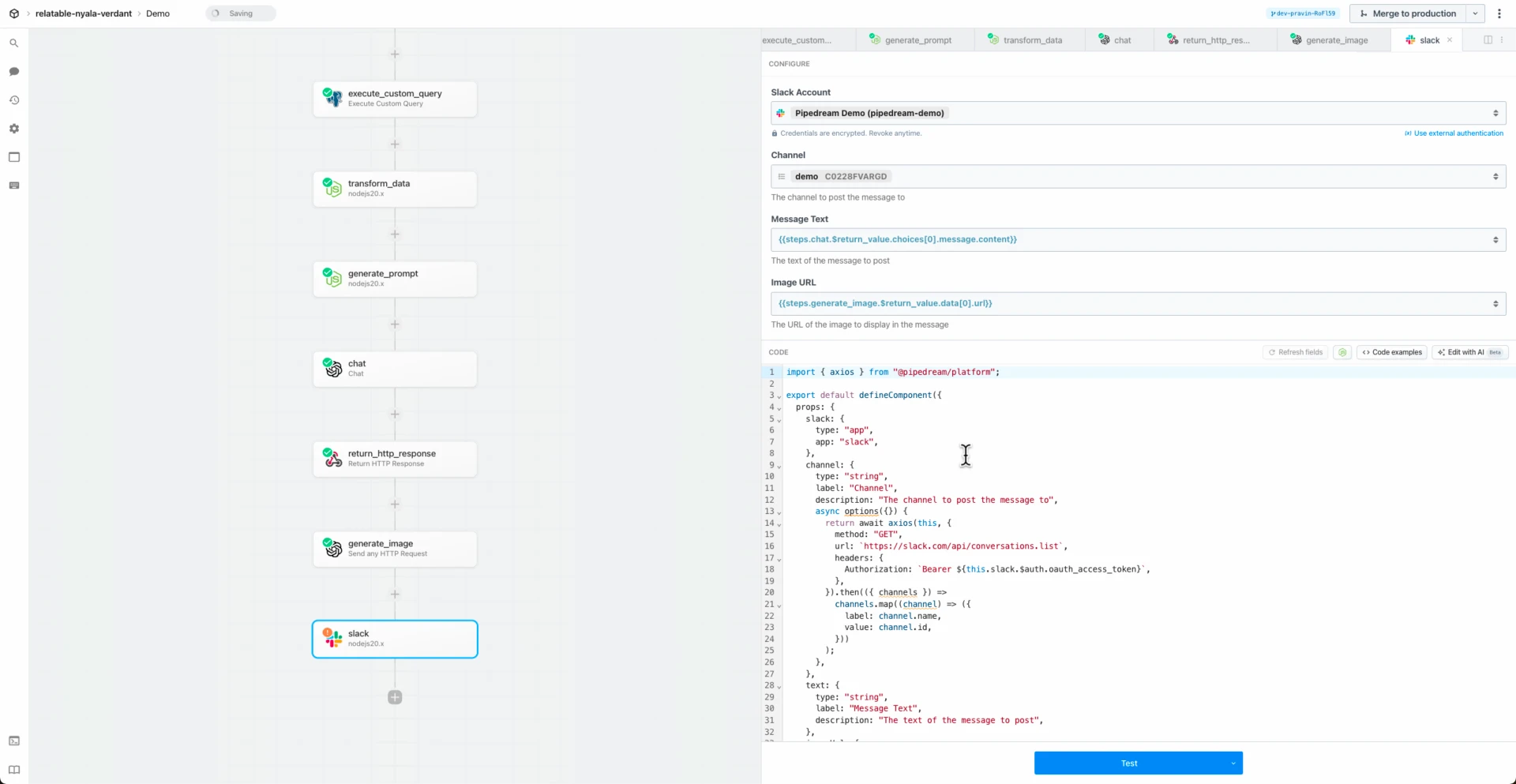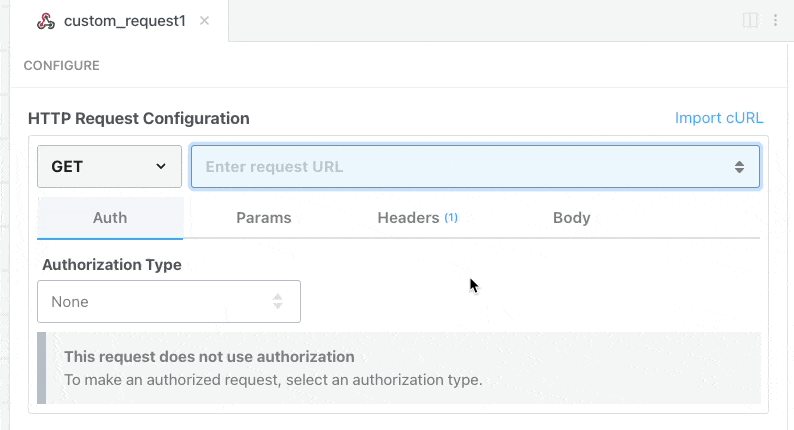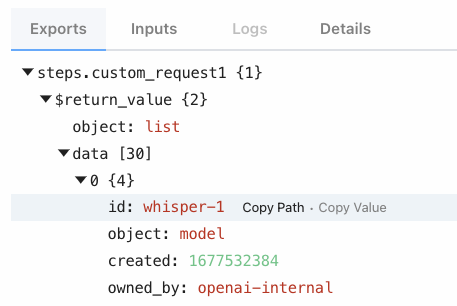import { ConfigurationError } from "@pipedream/platform";
import app from "../../exa.app.mjs";
export default {
key: "exa-get-contents",
name: "Get Contents",
description: "Retrieves full page contents, summaries, and metadata for a list of URLs. Uses cached results with optional live crawling fallback. [See the documentation](https://docs.exa.ai/reference/get-contents)",
version: "0.0.1",
type: "action",
annotations: {
destructiveHint: false,
openWorldHint: true,
readOnlyHint: true,
},
props: {
app,
urls: {
propDefinition: [
app,
"urls",
],
},
text: {
description: "If `true`, returns full page text with default settings. If `false`, disables text return.",
propDefinition: [
app,
"text",
],
},
highlightsNumSentences: {
propDefinition: [
app,
"highlightsNumSentences",
],
},
highlightsPerUrl: {
propDefinition: [
app,
"highlightsPerUrl",
],
},
highlightsQuery: {
propDefinition: [
app,
"highlightsQuery",
],
},
summaryQuery: {
propDefinition: [
app,
"summaryQuery",
],
},
summarySchema: {
propDefinition: [
app,
"summarySchema",
],
},
livecrawl: {
propDefinition: [
app,
"livecrawl",
],
},
livecrawlTimeout: {
type: "integer",
label: "Live Crawl Timeout",
description: "Timeout in milliseconds for live crawling (default: 10000)",
optional: true,
},
subpages: {
propDefinition: [
app,
"subpages",
],
},
subpageTarget: {
propDefinition: [
app,
"subpageTarget",
],
},
extrasLinks: {
propDefinition: [
app,
"extrasLinks",
],
},
extrasImageLinks: {
propDefinition: [
app,
"extrasImageLinks",
],
},
context: {
description: "Return page contents as a context string for LLM. When true, combines all result contents into one string. We recommend using 10000+ characters for best results, though no limit works best. Context strings often perform better than highlights for RAG applications.",
propDefinition: [
app,
"context",
],
},
},
async run({ $ }) {
const {
app,
urls,
text,
highlightsNumSentences,
highlightsPerUrl,
highlightsQuery,
summaryQuery,
summarySchema,
livecrawl,
livecrawlTimeout,
subpages,
subpageTarget,
extrasLinks,
extrasImageLinks,
context,
} = this;
let parsedSchema;
if (summarySchema) {
if (typeof summarySchema === "string") {
try {
parsedSchema = JSON.parse(summarySchema);
} catch (error) {
throw new ConfigurationError(`Invalid JSON schema format: ${error.message}. Please provide a valid JSON object.`);
}
} else {
parsedSchema = summarySchema;
}
}
const response = await app.getContents({
$,
data: {
urls,
text,
livecrawl,
livecrawlTimeout,
subpages,
subpageTarget,
context,
...(extrasLinks
|| extrasImageLinks
? {
extras: {
links: extrasLinks,
imageLinks: extrasImageLinks,
},
}
: undefined
),
...(highlightsNumSentences
|| highlightsPerUrl
|| highlightsQuery
? {
highlights: {
numSentences: highlightsNumSentences,
highlightsPerUrl,
query: highlightsQuery,
},
}
: undefined
),
...(summaryQuery
|| summarySchema
? {
summary: {
query: summaryQuery,
schema: parsedSchema,
},
}
: undefined
),
},
});
$.export("$summary", `Successfully retrieved contents with ID \`${response.requestId}\`.`);
return response;
},
};
 Chase Roberts@chsrbrts@benedictevans If you haven’t used @pipedream yet, then you haven’t lived.
Chase Roberts@chsrbrts@benedictevans If you haven’t used @pipedream yet, then you haven’t lived. ✨Ellie Day✨@heyelliedayEvaluation update: @pipedream has quite literally been a dream to work with! I’m excited to leverage this tool for all the various workflows I need to write. I’m currently at 11k invocations a day from the initial workflows I’ve written in the past couple weeks.
✨Ellie Day✨@heyelliedayEvaluation update: @pipedream has quite literally been a dream to work with! I’m excited to leverage this tool for all the various workflows I need to write. I’m currently at 11k invocations a day from the initial workflows I’ve written in the past couple weeks. Michael Braedley@MBraedleyUpdate: I got it working properly, and it's working so well that I'm dropping IFTTT. @pipedream can do everything that IFTTT basic can, and most (if not all things) IFTTT pro can for free or at a reasonable price if you need it. I am recommending it for basically any power user.
Michael Braedley@MBraedleyUpdate: I got it working properly, and it's working so well that I'm dropping IFTTT. @pipedream can do everything that IFTTT basic can, and most (if not all things) IFTTT pro can for free or at a reasonable price if you need it. I am recommending it for basically any power user. Thomas Cutting@mrthomascuttingWant quick+dirty integrations for a serverless workflow - @pipedream is my new go-to 😃
Thomas Cutting@mrthomascuttingWant quick+dirty integrations for a serverless workflow - @pipedream is my new go-to 😃 Matthew Roberts@mattdotrobertsday 013 - finally hit node js. This is the secret sauce of taking #nocode projects that one step further. Pumped about getting deeper into @pipedream now
Matthew Roberts@mattdotrobertsday 013 - finally hit node js. This is the secret sauce of taking #nocode projects that one step further. Pumped about getting deeper into @pipedream now Kenneth Auchenberg 💭@auchenbergYahoo Pipes is back! Kinda 😍 @pipedream
Kenneth Auchenberg 💭@auchenbergYahoo Pipes is back! Kinda 😍 @pipedream Raymond Camden 🥑@raymondcamdenAwesome video by the @pipedream folks showing real time twitter sentiment analysis integrated with Google Sheets. This is where Pipedream *really* shines, connecting systems together in easy workflows.
Raymond Camden 🥑@raymondcamdenAwesome video by the @pipedream folks showing real time twitter sentiment analysis integrated with Google Sheets. This is where Pipedream *really* shines, connecting systems together in easy workflows. Nacho Caballero@nachocaballeroI couldn't recommend @pipedream more. It's an amazing service to integrate different APIs. Much more powerful than Zapier and more user-friendly than AWS Lambda. I'm very proud to wear this t-shirt #NoCode
Nacho Caballero@nachocaballeroI couldn't recommend @pipedream more. It's an amazing service to integrate different APIs. Much more powerful than Zapier and more user-friendly than AWS Lambda. I'm very proud to wear this t-shirt #NoCode Jason Snow@jyksnwDeveloped a working prototype environmental sensor IoT solution with @particle Photon, @pipedream, and @MongoDB with full graphing and alerting in less than a day! All amazing technology, will def. be exploring these more.
Jason Snow@jyksnwDeveloped a working prototype environmental sensor IoT solution with @particle Photon, @pipedream, and @MongoDB with full graphing and alerting in less than a day! All amazing technology, will def. be exploring these more. Steven Terrana@steven_terrana@burgwyn you've inspired me to finally set up my own blog. I'll make sure my first blog post explains the tech behind the setup. think @obsdmd + @GatsbyJS + @pipedream.
Steven Terrana@steven_terrana@burgwyn you've inspired me to finally set up my own blog. I'll make sure my first blog post explains the tech behind the setup. think @obsdmd + @GatsbyJS + @pipedream. 🚄 James Augeri, PhD@DotDotJamesWant to low-code your back end, need more horsepower than @Bubble / @KnackHQ, or just miss Yahoo! Pipes? Check out @PipeDream
🚄 James Augeri, PhD@DotDotJamesWant to low-code your back end, need more horsepower than @Bubble / @KnackHQ, or just miss Yahoo! Pipes? Check out @PipeDream Sébastien Chopin@AtinuxGitHub issues should be like @linear_app for maintainers. Looking forward more integrations with GH actions or tools like @pipedream 👀
Sébastien Chopin@AtinuxGitHub issues should be like @linear_app for maintainers. Looking forward more integrations with GH actions or tools like @pipedream 👀 Raul@raul_predescuIf you're a dev and not using @pipedream, you're missing out. Been using it for months, daily. FREE for devs. Plenty of integrations and good limits. Absolutely love it.
Raul@raul_predescuIf you're a dev and not using @pipedream, you're missing out. Been using it for months, daily. FREE for devs. Plenty of integrations and good limits. Absolutely love it. Bruno Skvorc@bitfallsSo @pipedream is pretty amazing. In 3 minutes I just made a flow which adds @rickastley's Never Gonna Give You Up to my @spotify playlist whenever a new pull request arrives in an old repo of mine.
Bruno Skvorc@bitfallsSo @pipedream is pretty amazing. In 3 minutes I just made a flow which adds @rickastley's Never Gonna Give You Up to my @spotify playlist whenever a new pull request arrives in an old repo of mine. Zach Lanich@ZachLanichUm, wow 🤯 @pipedream
Zach Lanich@ZachLanichUm, wow 🤯 @pipedream Steven Bell@bellontechI just used @pipedream to build a Shopify App. Wow, they make small backed tasks easy.
Steven Bell@bellontechI just used @pipedream to build a Shopify App. Wow, they make small backed tasks easy. Jay Hack 🎩🇺🇸@_jayhack_Very impressed with this bad boi - it reminds me of a @PalantirTech internal tool, but geared towards integrations instead of data analysis and far more customizable. Great expectations here 🚀🤩
Jay Hack 🎩🇺🇸@_jayhack_Very impressed with this bad boi - it reminds me of a @PalantirTech internal tool, but geared towards integrations instead of data analysis and far more customizable. Great expectations here 🚀🤩 Tree Sturgeon 🔥🚴♂️🌳@philsturgeonFor context this is day 2 of a really challenging and stupid migration from Notion to @airtable with disparate/missing data. It's going better than expected and thanks to @pipedream I don't have to bother the iOS dev to add W3W.
Tree Sturgeon 🔥🚴♂️🌳@philsturgeonFor context this is day 2 of a really challenging and stupid migration from Notion to @airtable with disparate/missing data. It's going better than expected and thanks to @pipedream I don't have to bother the iOS dev to add W3W.




